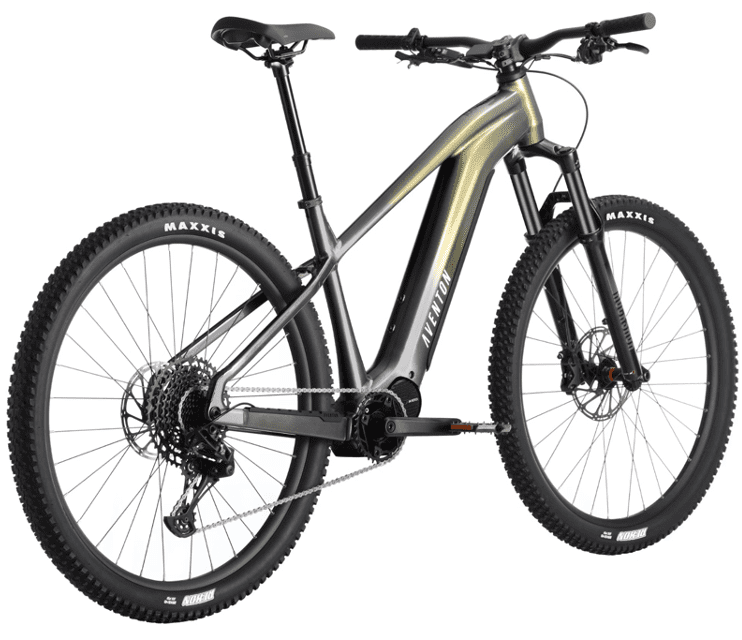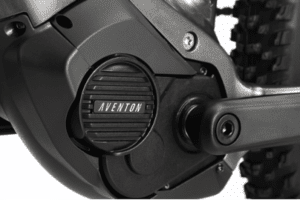
Mid Drive Ebikes: Couch to Cat 1 with an On/Off Switch
At Black Tie Bike Rentals Sun Valley, we rent several types of bikes optimized for different things, either by application or price. Within those use cases, the bikes can be divided into two main types with a distinction opaque to most customers: hub drive vs. mid drive ebikes.
Hub Drive vs. Mid Drive Ebikes
Mid drive bikes − the good stuff! A well-executed mid drive ebike feels like a regular bike if you were a powerful rider in your prime, maxing your training and ingesting all of the choicest vitamins.
In the simplest sense, the motor drive unit on a mid drive bike replaces the bottom bracket and adds its torque to your pedaling. From there, the power from pedaling and the motor are transmitted to the rear wheel of the bike by the chain, and the torque is multiplied by the rear cassette according to which gear you have selected. As the units improve, the addition of power becomes more and more seamless. There are times when you think you are doing it all on your own, then you look at the integrated power meter and it shows you that you are doing one-third of the work while the motor is doing the other two-thirds!
For the given battery size, these bikes tend to give more range. This is because you are always doing some of the pedaling, and the inherent efficiencies built into the motor drive unit.
Why Are They Accessible?
So why are these mid drives couch to Cat 1? According to sources (a quick google search, you can argue this, wait no you can’t we don’t have a comments section! HA!) an average cyclist (a person who cycles often but not competitively) can put out 100-150 watts continuously for maybe 2 hours. The Bosch Performance Line CX on our Powerfly bikes puts out 600 watts of power in a burst, and 250 watts continuously. That gives you power to match a frequent cyclist, even if you only ride once a year.
How does it give you that much help so smoothly? It is the torque sensor at the crank. For a given amount of torque you are applying, say 25nm, it will multiply that by the threshold set for your riding mode (1 -4). The maximum multiplication factor for the CX is 0% to 340%. That will give you the maximum torque assist of 85 nm, for a total of 110 nm to the rear cassette. That is a lot of torque! Not that far off of a 300cc motorcycle engine. Unfortunately this happens at about 70rpm, not 7,000, so you won’t be doing a good Travis Pastrana impression on a Trek Powerfly.

An Easy Ride with an Efficient Battery
Because we live in a nanny state, and because it is important to enforce some sort of trail etiquette, the assist party stops at 20mph on all Class 1 and Class 2 ebikes. Maximum assist will get you up to speed or help you up the hills. However, once you reach 20 mph it will likely take less than the 250 watt continuous output to maintain 20mph. This keeps your battery usage under control. It is awesome how much you can see and do on an ebike when your average speed is more than 10mph. What a time to be alive.
Examples of Mid Drive Ebikes
ETrek Fuel eXe
This thing is cool because it uses a harmonic pin ring as a motor and transmission, just like the Mars Rover. It has fewer moving parts, instantaneous response and is very quiet. The trade off is that it has less than half the power for the Bosch CX system. This bike comes closest to being just a regular bike with a strong rider on it.
Trek Powerfly
A great all around cruiser for pavement, dirt roads and Jeep trails. A very powerful motor and predictable handling.
Trek Verve +
An easy cruiser with a touch less power than the Powerfly, but a more upright riding position and an easy step through form factor. Best on bike paths and roadways.
To check out the full catalogue of bikes at Black Tie Sun Valley or to make a booking, please visit https://www.blacktiebikes.com/sun-valley/.
By Black Tie Skis of Sun Valley Owner Harry Oettinger